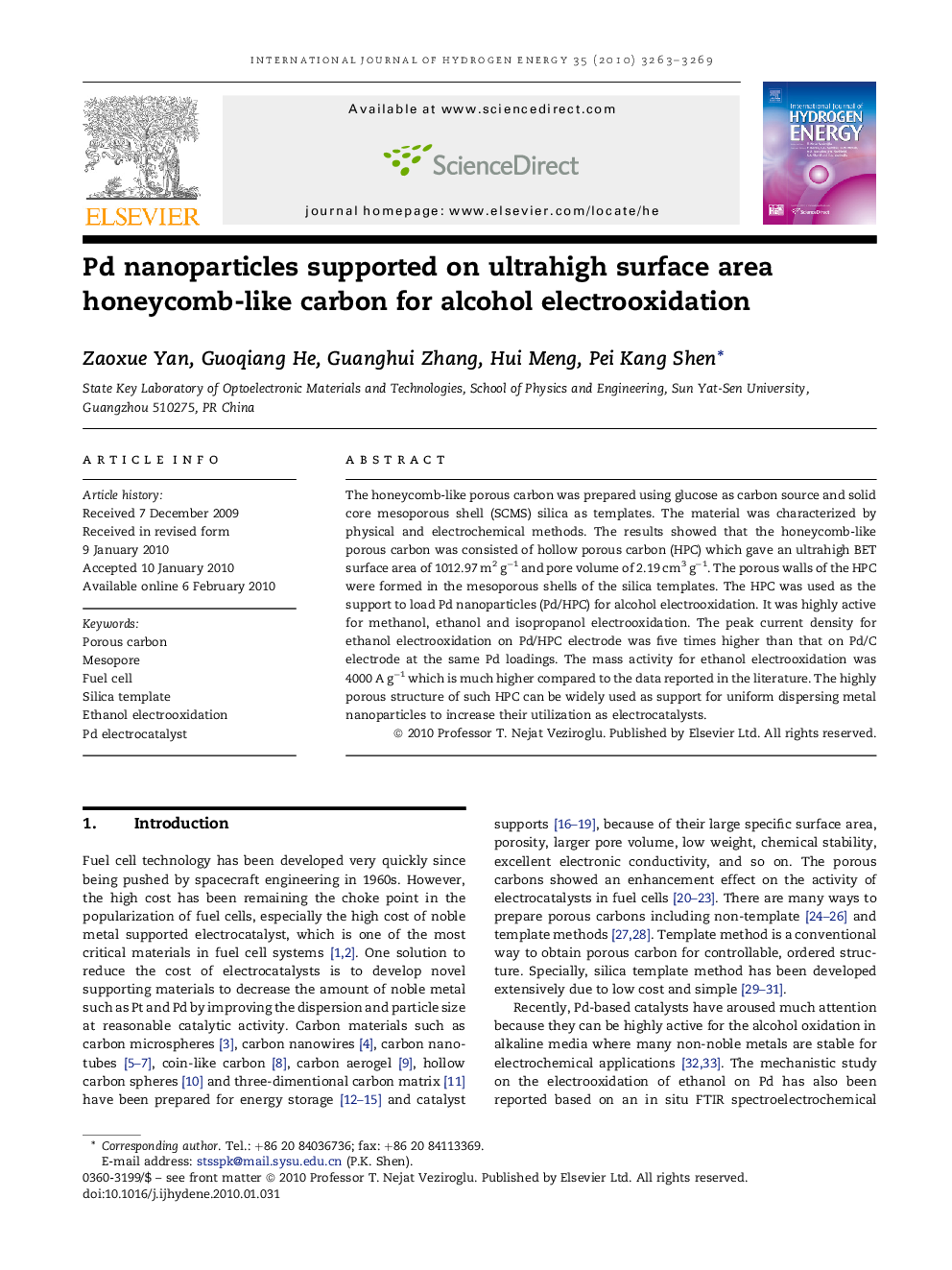| Article ID | Journal | Published Year | Pages | File Type |
|---|---|---|---|---|
| 1282879 | International Journal of Hydrogen Energy | 2010 | 7 Pages |
The honeycomb-like porous carbon was prepared using glucose as carbon source and solid core mesoporous shell (SCMS) silica as templates. The material was characterized by physical and electrochemical methods. The results showed that the honeycomb-like porous carbon was consisted of hollow porous carbon (HPC) which gave an ultrahigh BET surface area of 1012.97 m2 g−1 and pore volume of 2.19 cm3 g−1. The porous walls of the HPC were formed in the mesoporous shells of the silica templates. The HPC was used as the support to load Pd nanoparticles (Pd/HPC) for alcohol electrooxidation. It was highly active for methanol, ethanol and isopropanol electrooxidation. The peak current density for ethanol electrooxidation on Pd/HPC electrode was five times higher than that on Pd/C electrode at the same Pd loadings. The mass activity for ethanol electrooxidation was 4000 A g−1 which is much higher compared to the data reported in the literature. The highly porous structure of such HPC can be widely used as support for uniform dispersing metal nanoparticles to increase their utilization as electrocatalysts.
